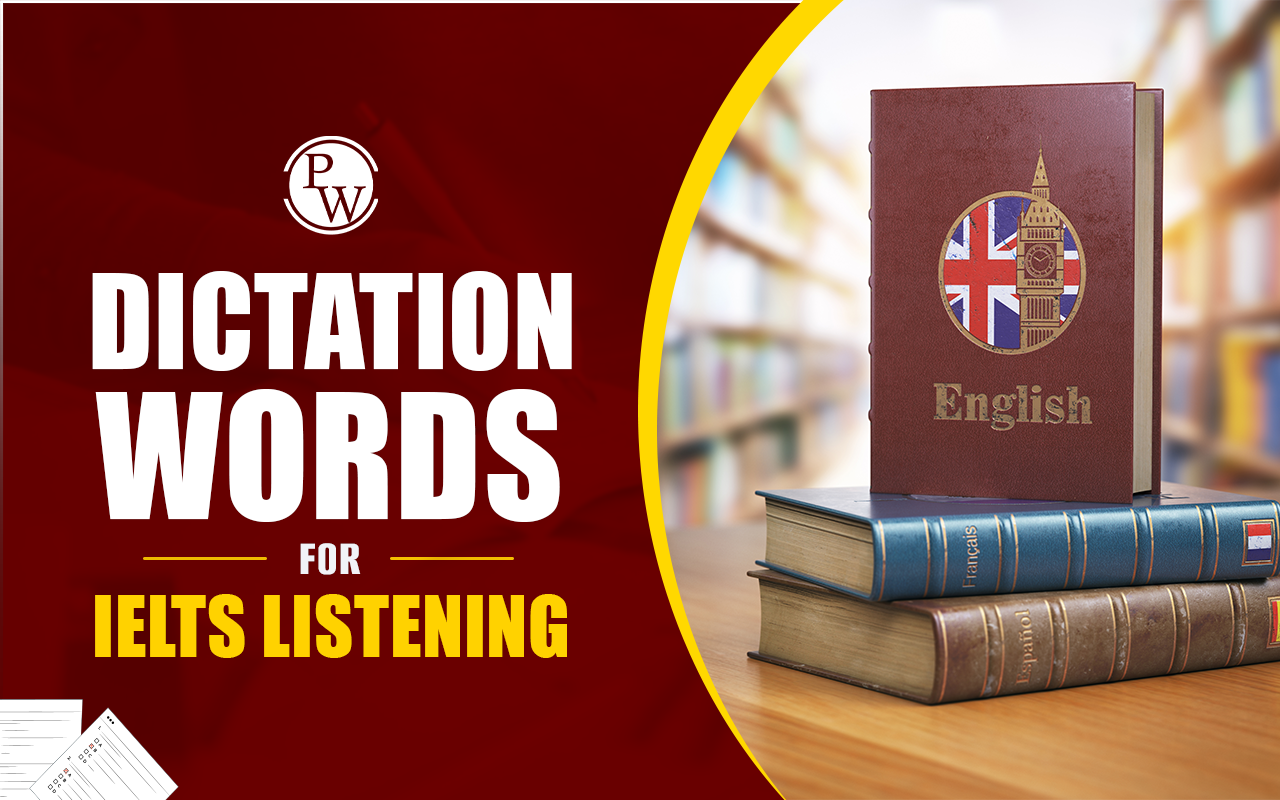
Glaciers IELTS Reading Answers: In the IELTS Reading test, questions on “Glaciers” are very common. The questions in the IELTS Reading Passage generally cover aspects of glacier formation, their types, movements, historical significance, and more. Therefore, preparing through the IELTS Reading practice test Glaciers IELTS Reading Answers can help students get an idea of the actual question types for the IELTS Reading module .
The Glaciers IELTS Reading Answers practice test generally includes questions on IELTS Matching Headings, IELTS True/False/Not Given, and IELTS Matching Features. The article covers a sample reading passage along with their answers for IELTS exam aspirants.Free IELTS Reading Practice Tests, Cambridge Sample Test PDF
Glaciers IELTS Reading Answers Passage
You should spend about 20 minutes on Questions 1-15 based on the Glaciers IELTS Reading Answers Passage below.Glaciers
1. Besides the earth's oceans, glacier ice is the largest source of water on earth. A glacier is a massive stream or sheet of ice that moves underneath itself under the influence of gravity. Some glaciers travel down mountains or valleys, while others spread across a large expanse of land. Heavily glaciated regions such as Greenland and Antarctica are called continental glaciers. These two ice sheets encompass over 95 percent of the earth's glacial ice. The Greenland ice sheet is almost 10,000 feet thick in some areas, and the weight of this glacier is so heavy that much of the region has been depressed below sea level. Smaller glaciers that occur at higher elevations are called alpine or valley glaciers. Another way of classifying glaciers is in terms of their internal temperature. In temperate glaciers, the ice within the glacier is near its melting point. Polar glaciers, in contrast, always maintain temperatures far below melting. 2. Most of the earth's glaciers are near the poles, though glaciers exist on all continents, including Africa and Oceania. The reason glaciers are generally formed in high alpine regions is that they require cold temperatures throughout the year. In these areas where there is little opportunity for summer ablation (loss of mass), snow changes to compacted firn and then crystallized ice. During periods in which melting and evaporation exceed the amount of snowfall, glaciers will retreat rather than progress. While glaciers rely heavily on snowfall, other climactic conditions including freezing rain, avalanches, and wind, contribute to their growth. One year of below-average precipitation can stunt the growth of a glacier tremendously. With the rare exception of surging glaciers, a common glacier flows about 10 inches per day in the summer and 5 inches per day in the winter. The fastest glacial surge on record occurred in 1953 when the Kutiah Glacier in Pakistan grew more than 12 kilometers in three months. 3. The weight and pressure of ice accumulation cause glacier movement. Glaciers move out from under themselves, via plastic deformation and basal slippage. First, the internal flow of ice crystals begins to spread outward and downward from the thickened snow pack also known as the zone of accumulation. Next, the ice along the ground surface begins to slip in the same direction. Seasonal thawing at the base of the glacier helps to facilitate this slippage. The middle of a glacier moves faster than the sides and bottom because there is no rock to cause friction. The upper part of a glacier rides on the ice below. As a glacier moves it carves out a U-shaped valley similar to a riverbed, but with much steeper walls and a flatter bottom. 4. Besides the extraordinary rivers of ice, glacial erosion creates other unique physical features in the landscape such as horns, fjords, hanging valleys, and cirques. Most of these landforms do not become visible until after a glacier has receded. Many are created by moraines, which occur at the sides and front of a glacier. Moraines are formed when material is picked up along the way and deposited in a new location. When many alpine glaciers occur on the same mountain, these moraines can create a horn. The Matterhorn, in the Swiss Alps, is one of the most famous horns. Fjords, which are very common in Norway, are coastal valleys that fill with ocean water during a glacial retreat. Hanging valleys occur when two or more glacial valleys intersect at varying elevations. It is common for waterfalls to connect the higher and lower hanging valleys, such as in Yosemite National Park. A cirque is a large bowl-shaped valley that forms at the front of a glacier. Cirques often have a lip on their' slope that is deep enough to hold small lakes when the ice melts away. 5. Glacier movement and shape-shifting typically occur over hundreds of years. While presently about 10 percent of the earth's land is covered with glaciers, it is believed that during the last Ice Age glaciers covered approximately 32 percent of the earth's surface. In the past century, most glaciers have been retreating rather than flowing forward. It is unknown whether this glacial activity is due to human impact or natural causes, but by studying glacier movement, and comparing climate and agricultural profiles over hundreds of years, glaciologists can begin to understand environmental issues such as global warming.Glaciers IELTS Reading Answers Sample Questions
Questions 1–5 Match the correct heading to each paragraph.List of Headings i. How glaciers move and carve landscapes ii. Classifications of glaciers and their characteristics iii. Global distribution of glaciers and their dependency on climate iv. Glaciers during the Ice Age and environmental implications v. Unique landforms created by glacial activity Paragraphs
- Paragraph A: ______
- Paragraph B: ______
- Paragraph C: ______
- Paragraph D: ______
- Paragraph E: ______
Questions 6–10 Do the following statements agree with the information in the passage? Write:
- TRUE if the statement agrees with the information
- FALSE if the statement contradicts the information
- NOT GIVEN if there is no information on this
- Continental glaciers make up less than half of the earth's total glacial ice.
- Glaciers in temperate regions always maintain temperatures far below freezing.
- The Greenland ice sheet has caused some areas of the region to sink below sea level.
- Seasonal thawing has no impact on the movement of glaciers.
- The Matterhorn was formed by several alpine glaciers on the same mountain.
Questions 11–13 Match the following glacier-related terms to their definitions or examples.Terms: A. Cirque B. Fjord C. Moraines Definitions/Examples: 11. A coastal valley filled with ocean water during glacial retreat. 12. A large bowl-shaped valley that can hold small lakes after the ice melts. 13. Formations created from materials picked up and deposited by glaciers. Also Read:
- Should You Use All Capital Letters in the IELTS Listening and Reading Tests
- IELTS Reading Mistakes
- How to Improve IELTS Reading Score
- How to Manage Time in IELTS Reading
Glaciers IELTS Reading Answers with Explanation
- Paragraph A - Classifications of glaciers and their characteristics
- Paragraph B - Global distribution of glaciers and their dependency on climate
- Paragraph C - How glaciers move and carve landscapes
- Paragraph D - Unique landforms created by glacial activity
- Paragraph E - Glaciers during the Ice Age and Environmental Implications
- Continental glaciers make up less than half of the earth's total glacial ice.
- Glaciers in temperate regions always maintain temperatures far below freezing.
- The Greenland ice sheet has caused some areas of the region to sink below sea level.
- Seasonal thawing has no impact on the movement of glaciers.
- The Matterhorn was formed by several alpine glaciers on the same mountain.
- A coastal valley filled with ocean water during glacial retreat.
- large bowl-shaped valley that can hold small lakes after the ice melts.
- Formations created from materials picked up and deposited by glaciers.
| IELTS Exam Important Links | |
|---|---|
| IELTS Reading Band Score | IELTS Listening Band Score |
| IELTS Speaking Band Score | IELTS Writing Band Score |
Tips for Answering the Question Types in Glaciers IELTS Reading Answers
Preparing for reading passages, particularly about topics like glaciers requires some specific preparation tips and strategies. Some popular tips for answering the question types in Glaciers IELTS Reading Answers are as follows:1. Multiple Choice Questions
- Use elimination strategies to find out the most relevant information.
- Quickly skim the passage to locate major keywords relevant texts in the passage.
2. True/False/Not Given
- Focus on specific details and avoid assumptions.
- Verify statements whether they are true, false, or missing.
- Use the first and last sentences to summarize the paragraph’s main idea.
- Avoid partial matches.
4. Sentence Completion
- Try to maintain grammatical accuracy while completing the sentences.
- Be concise and use exact words from the text.
5. Matching Information
- Highlight keywords such as key names, dates, or terms in the question and find them in the passage.
- Cross-check your answer by reviewing related parts of the text.
Read More: How to Manage Time in IELTS Reading
Guidance of PW IELTS
Physics Wallah offers a few popular online IELTS courses for all students. Follow the latest IELTS articles to better prepare for the exam.| IELTS Exam Other Related Links | |
|---|---|
| IELTS Registration | IELTS Eligibility Criteria |
| IELTS Exam Pattern | IELTS Syllabus |
| IELTS Exam Dates | IDP IELTS Test Centers |
Glaciers IELTS Reading Answers FAQs
Q. What type of questions can I expect in the Glaciers IELTS Reading passage?
Ans. The passage on glaciers typically includes question types like True/False/Not Given, Matching Headings, Sentence Completion, Multiple Choice Questions, and Diagram/Flowchart Completion.
Q. How can I prepare for vocabulary related to glaciers?
Ans. To prepare for vocabulary related to glaciers, familiarize yourself with common glacier-related terms such as Glacial erosion, Moraines, Ice sheets, etc. Try to include these words in your speech, and practice various sentence formations to learn these words quickly.
Q. How do I approach diagram completion questions for glaciers?
Ans. To approach diagram completion questions for Glaciers try to understand the diagram to look for specific information, locate keywords to scan the passage, and use words used directly in the passage to avoid errors.
Q. Are there specific time management tips for Glaciers IELTS reading passages?
Ans. A few specific tips for time management for Glaciers IELTS reading passages are to try to do a quick skimming of passages, focus on keywords of the questions to find in the text, divide your time equally such as 20 minutes per passage, and others.
Talk to a counsellorHave doubts? Our support team will be happy to assist you!

Check out these Related Articles
Free Learning Resources
PW Books
Notes (Class 10-12)
PW Study Materials
Notes (Class 6-9)
Ncert Solutions
Govt Exams
Class 6th to 12th Online Courses
Govt Job Exams Courses
UPSC Coaching
Defence Exam Coaching
Gate Exam Coaching
Other Exams
Know about Physics Wallah
Physics Wallah is an Indian edtech platform that provides accessible & comprehensive learning experiences to students from Class 6th to postgraduate level. We also provide extensive NCERT solutions, sample paper, NEET, JEE Mains, BITSAT previous year papers & more such resources to students. Physics Wallah also caters to over 3.5 million registered students and over 78 lakh+ Youtube subscribers with 4.8 rating on its app.
We Stand Out because
We provide students with intensive courses with India’s qualified & experienced faculties & mentors. PW strives to make the learning experience comprehensive and accessible for students of all sections of society. We believe in empowering every single student who couldn't dream of a good career in engineering and medical field earlier.
Our Key Focus Areas
Physics Wallah's main focus is to make the learning experience as economical as possible for all students. With our affordable courses like Lakshya, Udaan and Arjuna and many others, we have been able to provide a platform for lakhs of aspirants. From providing Chemistry, Maths, Physics formula to giving e-books of eminent authors like RD Sharma, RS Aggarwal and Lakhmir Singh, PW focuses on every single student's need for preparation.
What Makes Us Different
Physics Wallah strives to develop a comprehensive pedagogical structure for students, where they get a state-of-the-art learning experience with study material and resources. Apart from catering students preparing for JEE Mains and NEET, PW also provides study material for each state board like Uttar Pradesh, Bihar, and others
Copyright © 2025 Physicswallah Limited All rights reserved.
Get App









